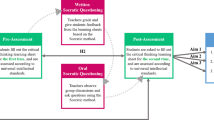Abstract
This perspective is a counterpoint to Dr. Brass’ article, Basic biomedical sciences and the future of medical education: implications for internal medicine. The authors review development of the US medical education system as an introduction to a discussion of Dr. Brass’ perspectives. The authors agree that sound scientific foundations and skill in critical thinking are important and that effective educational strategies to improve foundational science education should be implemented. Unfortunately, many students do not perceive the relevance of basic science education to clinical practice.
The authors cite areas of disagreement. They believe it is unlikely that the importance of basic sciences will be diminished by contemporary directions in medical education and planned modifications of USMLE. Graduates’ diminished interest in internal medicine is unlikely from changes in basic science education.
Thoughtful changes in education provide the opportunity to improve understanding of fundamental sciences, the process of scientific inquiry, and translation of that knowledge to clinical practice.
Similar content being viewed by others
References
Brass EP. Basic biomedical sciences and the future of medical education: implications for internal medicine. J Gen Intern Med. 2009. doi:10.1007/s11606-009-0998-5
Flexner A. Medical Education in the United States and Canada: a report to the Carnegie Foundation for the Advancement of Teaching. New York; 1910.
Christakis NA. The similarity and frequency of proposals to reform US medical education: Constant concerns. JAMA. 1995;274(9):706–11.
Cooke M, Irby DM, Sullivan W, Ludmerer KM. American medical education 100 years after the Flexner report. N Engl J Med. 2006;355(13):1339–44.
Ludmerer KM. Learning to Heal: The Development of American Medical Education. New York: Basic Books; 1985.
Ludmerer KM. Time to Heal: American Medical Education from the Turn of the Century to the Era of Managed Care. Oxford University Press; 1999.
Barzansky B, Etzel SI. Educational programs in US medical schools, 2003–2004. JAMA. 2004;292(9):1025–31.
Haynes RB. What kind of evidence is it that evidence-based medicine advocates want health care providers and consumers to pay attention to? BMC Health Serv Res. 2002;2(1):3.
Guyatt GH, Oxman AD, Vist GE, Kunz R, Falck-Ytter Y, Alonso-Coello P, Schunemann HJ. GRADE: 1. An emerging consensus on rating quality of evidence and strength of recommendations. Brit Med J. 2008;336:924–6.
Guyatt GH, Oxman AD, Kunz R, Vist GE, Falck-Ytter Y, Schunemann HJ. GRADE: 2. What is “quality of evidence” and why is it important to clinicians? Brit Med J. 2008;336:995–8.
Guyatt GH, Oxman AD, Kunz R, Falck-Ytter Y, Vist GE, Liberati A, Schunemann HJ. GRADE: 3. Going from evidence to recommendations. Brit Med J. 2008;336:1049–51.
Sackett DL, Rosenberg WMC, Gray JAM, Haynes RB, Richardson WS. Evidence based medicine: what it is and what it isn’t. [Editorial] Brit Med J. 1996;312:1–72. PMID: 8555924.
Straus SE, Richardson WS, Glasziou P, Haynes RB, eds. Evidence-Based Medicine: How to Practice and Teach EBM, 3/e, Edinburgh, UK: Churchill Livingstone/Elsevier; 2005.
Bransford JD, Brown AL, Cocking RR, eds. How People Learn: Brain, Mind, Experience, and School. Washington, DC: National Academy Press; 2000.
Sawyer RK, ed. The Cambridge Handbook of the Learning Sciences. Cambridge, UK: Cambridge University Press; 2006.
Ludmerer KM. The internal challenges to medical education. Trans Am Clin Climatol Assoc. 2003;114:241–50.
Miller J, Bligh J, Stanley I, al Shehri A. Motivation and continuation of professional development. Br J Gen Pract. 1998;48:1429–32.
D’Eon MF. Knowledge loss of medical students on first year basic science courses at the University of Saskatchewan. BMC Med Educ. 2006;6:5.
Watt ME. Retention of preclinical knowledge by clinical students. Med Educ. 1987;21:119–24.
Sissons JC, Swartz RD, Wolf FM. Learning, retention and recall of clinical information. Med Educ. 1992;26:454–61.
Swanson DB, Case SM, Luecht RM, Dillon GF. Retention of basic science information by fourth year medical students. Acad Med. 1996;71:S80–2.
Comprehensive review of USMLE available at: http://www.usmle.org/General_Information/CEUP-Summary-Report-June2008.PDF Accessed June 16, 2009.
Scoles PV. Comprehensive review of the USMLE. Adv Physiol Educ. 2008;32:109–10.
Weinberger SE, Smith LG, Collier VU. Redesigning training for internal medicine. Ann Intern Med. 2006;144(12):927–32. Epub 2006.
Report of the AAMC-HHMI Committee. Scientific Foundations for Future Physicians. Washington, DC: Association of American Medical Colleges, 2009.
Greiner AC, Knebel E. (eds) Health Professions Education: A Bridge to Quality. Institute of Medicine of the National Academies. Washington, DC; National Academies Press; 2003.
Sutkin G, Wagner E, Harris I, Schiffer R. What makes a good clinical teacher in medicine? A review of the literature. Acad Med. 2008;83:452–66.
Kilminster S, Cottrell, Grant J, Jolly B. AMEE Guide 27: Effective educational and clinical supervision. Med Teach. 2007;29:2–19.
Ramani S, Leinster S. AMEE Guide 34: teaching in the clinical environment. Med Teach. 2008;30:347–64.
Reilly BM. Inconvenient truths about effective clinical teaching. Lancet. 2007;370:705–11.
Conflict of Interest
None disclosed.
Author information
Authors and Affiliations
Corresponding author
Rights and permissions
About this article
Cite this article
Fincher, RM.E., Wallach, P.M. & Richardson, W.S. Basic Science Right, Not Basic Science Lite: Medical Education at a Crossroad. J GEN INTERN MED 24, 1255–1258 (2009). https://doi.org/10.1007/s11606-009-1109-3
Received:
Revised:
Accepted:
Published:
Issue Date:
DOI: https://doi.org/10.1007/s11606-009-1109-3




